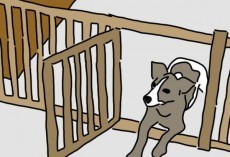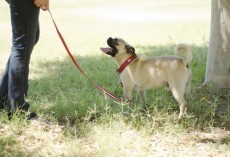It's pretty amazing what you can use to help your pup out in an event of an injury. Things like socks, sweaters, and even shoelaces prove useful when you're out in the wilderness and are in a survival situation. Keep your pooch safe by applying the tips below if needed:
I keep a well-stocked pet first aid kit in my home, as well as a smaller version in my SUV.
But even the most conscious of pet parents among us does not tote a pet first aid kit around 24/7. The reality is that injuries and illnesses in our dogs can occur any place, any time — and usually when our pet first aid kit is not nearby.
So, here are some common emergency situations and the everyday items you may be wearing or have within reach to use as makeshift pet first aid tools.
1. Dialing in the many safety features of your cellphone
In addition to taking a hands-on pet first aid class, I encourage you to download a pet first aid app, such as the one offered by the American Red Cross, to your cellphone today. Your cellphone is your No. 1 pet first aid tool.2. Safely restraining your injured dog
Even the mellowest of mutts can bite when in pain, so heed Pet First Aid Rule No. 1: Protect yourself first before rendering care. A six-foot nylon leash can be used as a muzzle restraint to prevent your injured dog from being able to open his mouth wide enough to bite you. This restraint enables him to still breathe.Other Mutt-gyver restraint options: For smaller dogs, you can use the drawstring from a hooded sweatshirt or your sneaker shoelace as a temporary muzzle.
3. Administering to cut paws
So I cleaned her paw with bottled water, used a bandana to apply pressure to stop the bleeding, and left the folded bandana on the wound. I then wrapped her paw in a white crew sock — you could also wrap the paw in an unused plastic doggie bag — and tied it snugly using a friend’s hair tie.Other Mutt-gyver options: After applying a restraint muzzle, you can make a makeshift splint by using paint stirrers or Popsicle sticks and wrapping the limb in a water bottle, newspapers, or a magazine held in place with shoelaces or a bandana.
4. Treating bee or wasp stings
You can reduce your dog’s chance of being stung by steering him away from ground cover on your leashed walks and making sure he heeds the “come back” cue from you, so he doesn’t inadvertently poke his nose into a beehive.5. Treating a dog who gets too hot or too cold
Dogs perspire through their paws. On superhot days, keep your dog cool by dipping his paws into cool water.
On cold days, coat your dog’s paws in petroleum jelly to prevent ice crystals or salt from cutting the paws.
If your doggy happens to get too cold, you can hold her close so she can receive some of your body heat. You don't want to rub her, though but simply hold her. If you have a jacket on you can also put her underneath your jacket so she can stay closer to your body.
Dogster has more tips on first aid tips and tricks for your pooch. Hopefully, you'll never have to experience a situation like this, but it's always good to be prepared.










